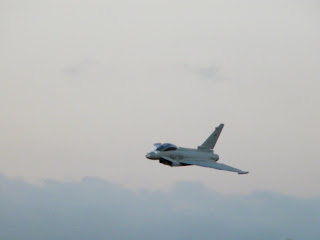 Lately there have been a couple of new additions to the rubbish bin at DDRF. Sadly one of them was a beautiful British Arrows (EDF). There seem to be more horror stories floating around regarding crash and burn attempts at trying to get into EDF flying, which prompts me to share my experiences of EDF flying, which I have found to be both exciting and fun.
Lately there have been a couple of new additions to the rubbish bin at DDRF. Sadly one of them was a beautiful British Arrows (EDF). There seem to be more horror stories floating around regarding crash and burn attempts at trying to get into EDF flying, which prompts me to share my experiences of EDF flying, which I have found to be both exciting and fun.
So, here goes:
- When selecting a power plant for your plane always remember the golden rule. Thrust must alway exceed weight. Thus if you have an 800g model, you should have at least 1000g of thrust available at full throttle.
- Check the rating of your motor. The higher the kv the better, but obivously this means more draw from the battery, but the faster the fan spins the more thrust per weight it will produce. As a guide I use at least a 3500-4000kv (20-25A) motor for my foamies that are 600-800g.
- Your ESC must be rated to deliver both the "boost" current and continous load current required by the motor. Thus if your motor is rated 25Amps continuous current, then you need at least a 30Amp ESC but you better off going for a 40Amp to make sure you have the boost (Peak current rating). This is very important why? Well like a full side jet engine an EDF will "spool" up when the throttle is wacked open (like when going into a step climb). During this period the fan is drawing in air at an increased rate and forcing it against the air at the back of the plane trying to accelerate the model. The air is not "flowing" though the model as easily as when it is forward flight (if you know what I mean). This places a heavy load on the motor, which will draw heavy current from the ESC. If the ESCs maximum output limit is exceed it will no longer be able to supply the required current to the motor, resulting in poor performance or even worse failure of the ESC itself.
- Next comes batteries. As with the ESC, if the battery cannot deliver the required Amps, then the model will under perform. Here though the problem is more severe, because under rated batteries will result in a voltage drop during overload, which will result in a lower fan speed and the loss of thrust as opposed to a limitation in thrust caused by a under rated ESC. A lose of fan speed in an EDF is like a flame-out in a real turbine, and that's bad! A good practice is to go a little bigger, so if the model calls for a minimum of a 20C battery, go for a 25C or 35C, don't cut costs here, you'll be sorry later.
- So model all built and ready to fly. The best way to get in the air is the runway! Hand launching an EDF is very tricky. If you have the option, put the landing gear on and use the runway. EDFs are generally replicas of fighters etc, and these like lots of air over the wings and control surfaces. By running down the runway, you have all the flow you need by the time you get airborne. During hand launching you have very little control until the model has accelerated sufficiently, and this often results in a nose dive and crash.
- If you have to hand launch, then it's full taps, wait for the spool-up to finish so you have max thrust. Into the wind and make sure you throw sraight, and slightly nose up, not too much or it's crash and burn!! Allow the model to accelerate before starting to climb, too early and you wont have enough thrust to maintain your climb.
- Once you flying it's all the same. The biggest difference is that "spooling" which you don't have on a propped plane. So if you coming out of a loop, throttle up earlier than you would with a prop plane, and whenever you need to accelerate or climb, do it sooner than you would on a prop flyer.
- Landing is no different to a prop. The biggest difference here is in that you are probably flying a fighter jet replica, and as mentioned before they like lots of air over the control surfaces. What I always do is to start my approach higher, than you would with your other planes. Hold a steeper glide path to the runway, thus keeping a relatively high airspeed until I'm over the runway (this will help if you need to abort and re-accelerate). Level out over runway, then follow thourgh to a nose up attitude as the speed drops off, and apply 1/4 throttle to keep the model level until I'm happy that I'm straight (with the high landing speed you need a long run-off, so make sure you straight). Put it down by reducing the thottle until the wheels touch down. Roll out as straight as possible until the model stops.
Shaun
No comments:
Post a Comment